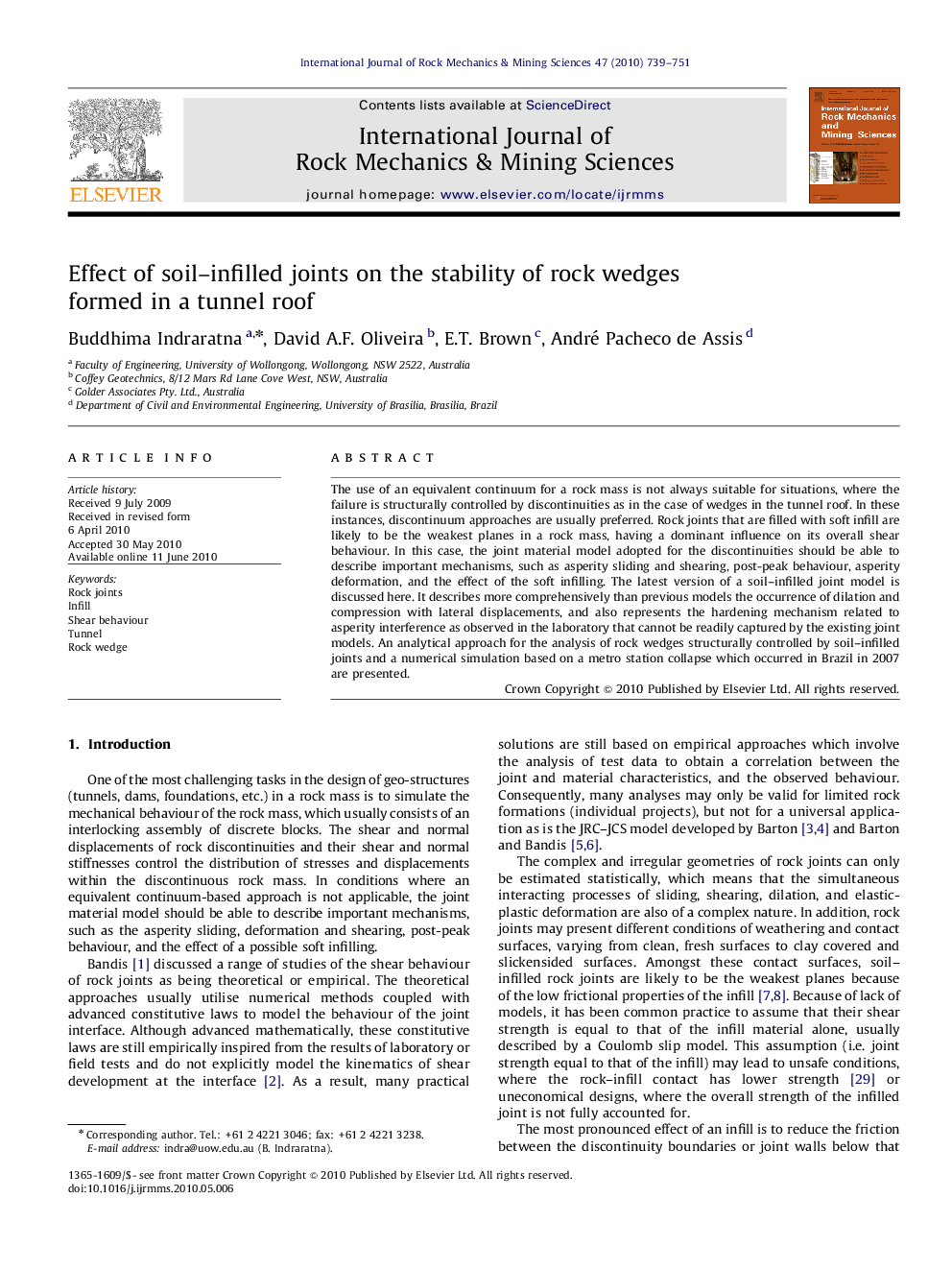| Article ID | Journal | Published Year | Pages | File Type |
|---|---|---|---|---|
| 809789 | International Journal of Rock Mechanics and Mining Sciences | 2010 | 13 Pages |
The use of an equivalent continuum for a rock mass is not always suitable for situations, where the failure is structurally controlled by discontinuities as in the case of wedges in the tunnel roof. In these instances, discontinuum approaches are usually preferred. Rock joints that are filled with soft infill are likely to be the weakest planes in a rock mass, having a dominant influence on its overall shear behaviour. In this case, the joint material model adopted for the discontinuities should be able to describe important mechanisms, such as asperity sliding and shearing, post-peak behaviour, asperity deformation, and the effect of the soft infilling. The latest version of a soil–infilled joint model is discussed here. It describes more comprehensively than previous models the occurrence of dilation and compression with lateral displacements, and also represents the hardening mechanism related to asperity interference as observed in the laboratory that cannot be readily captured by the existing joint models. An analytical approach for the analysis of rock wedges structurally controlled by soil–infilled joints and a numerical simulation based on a metro station collapse which occurred in Brazil in 2007 are presented.
